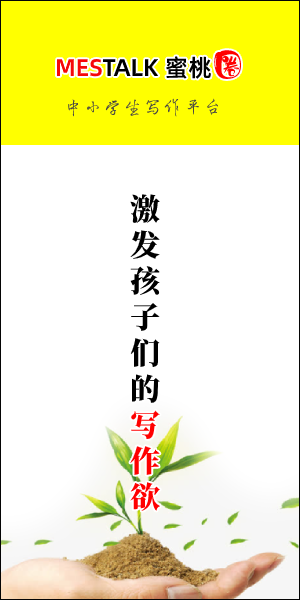首页 >
箭石
✍ dations ◷ 2025-11-30 23:01:13 #箭石
箭石类动物(学名:Belemnoidea),旧作箭石下纲,是一个已灭绝头足纲生物的分支,生活在泥盆纪至白垩纪之间。箭石在许多方面都与现代的鱿鱼相当接近,而且与现代的乌贼关系密切。箭石也拥有墨囊,不过它们有10条大约相同长度的触腕,其中并没有特别长的触腕。箭石的学名"belemnoid"是来自于希腊文βέλεμνον(belemnon,意指“飞镖或箭头”),以及另一希腊字είδος(eidos,意指“形式”),即“箭头形状”的动物。箭石类动物包括了箭石目、闭箭石目、沟箭石目和Diplobelida。箭石类在侏罗纪与白垩纪时数量相当多,所以它们的化石在中生代的海洋岩层中相当丰富,经常伴随着菊石类出现。不过箭石也跟菊石一起在白垩纪末期灭绝了。箭石是由杆石于泥盆纪时期演化而来,从密西西比纪(或早石炭世)至白垩纪末之间的地层中可以发现良好的箭石化石,其他头足类如杆菊石、鹦鹉螺类及棱菊石类等也可发现。Belemnoids possessed a central phragmocone made of aragonite and with negative buoyancy. To the rear of the creature was a heavy calcite guard whose main role appears to have been to counterbalance the front (towards the head) of the organism; it positions the centre of mass below the centre of buoyancy, increasing the stability of the swimming organism. The guard would account for between a third and a fifth of the length of the complete organism, arms included.Like some modern squid, belemnoid arms carried a series of small hooks for grabbing prey. Belemnoids were efficient carnivores that caught small fish and other marine animals with their arms and ate them with their beak-like jaws. In turn, belemnites appear to have formed part of the diet of marine reptiles such as Ichthyosaurs, whose fossilized stomachs frequently contain phosphatic hooks from the arms of cephalopods.Belemnoids were effectively neutrally buoyant, and swam in near-shore to mid-shelf oceans. Their fins could be used to their advantage in all water speeds; in a gentle current they could be flapped for propulsion; in a stronger current they could be held erect to generate lift; and when swimming rapidly by jet propulsion they could be tucked in to the body for streamlining.箭石形成化石的部分大多是其结实的“护甲”,通常呈拉长的子弹形。(though in some subgroups the rostrum may only exist as a thin layer coating the phragmocone).The hollow region at the front of the guard is termed the alveolus 护甲后端的中穴内包覆或连接着圆锥状的闭锥(英语:Phragmocone),而闭锥就是箭石调节浮力的气室,大多数箭石标本的护甲末端中穴与闭锥部分常会被压碎,没有完整的保存下来,只有保存较好的标本能保留下来。Projecting forwards from one side of the phragmocone is the thin pro-ostracum.While belemnoid phragmocones are homologous with the shells of other cephalopods and are similarly composed of aragonite, belemnoid guards are evolutionarily novel and are composed of calcite or aragonite, thus tending to preserve well. Broken guards show a structure of radiating calcite fibers and may also display concentric growth rings.The guard, phragmocone and pro-ostracum were all internal to the living creature, forming a skeleton which was enclosed entirely by soft muscular tissue. The original living creature would have been larger than the fossilized shell, with a long streamlined body and prominent eyes. The guard would have been in place toward the rear of the creature, with the phragmocone behind the head and the pointed end of the guard facing backward.The guard of the belemnoid Megateuthis gigantea, which is found in Europe and Asia, can measure up to 46厘米(18英寸) in length, giving the living animal an estimated length of 3米(9.8英尺).Very exceptional belemnoid specimens have been found showing the preserved soft parts of the animal. Elsewhere in the fossil record, bullet-shaped belemnite guards are locally found in such profusion that such deposits are referred to semi-formally as "belemnite battlefields" (cf. "orthocone orgies"). It remains unclear whether these deposits represent post-mating mass death events, as are common among modern cephalopods and other semelparous creatures.在数百年前的欧洲,尚未有古生物学概念的时代,当时的英国人认为箭石的化石是雷打到地面而形成的,所以称其为“雷石(Thunderstones)”,成为箭石化石的别称。The stable isotope composition of a belemnoid rostrum from the Peedee Formation (Cretaceous, southeast USA) has long been used as a global standard (Peedee Belemnite, "PDB") against which other isotope geochemistry samples are measured, for both carbon isotopes and oxygen isotopes.Some belemnoids (such as Belemnites of Belemnitida) serve as index fossils, particularly in the Cretaceous Chalk Formation of Europe, enabling geologists to date the age the rocks in which they are found.Template:Fossil cephalopods
相关
- 妊娠并发症妊娠并发症(Complications of pregnancy)是有关妊娠的健康问题。在分娩时出现的并发症一般会称为是分娩并发症(英语:obstetric labor complication),在分娩之后的称为产褥期疾病(英
- 约翰·肯德鲁约翰·肯德鲁爵士,CBE,FRS(英语:Sir John Kendrew,1917年3月24日-1997年8月23日),英国生物学家,1962年获诺贝尔化学奖。1917年出生于英国牛津。1901年:范托夫 | 1902年:费歇尔 | 1903年
- 驱逐舰驱逐舰(英语:destroyer)是一种多用途的军舰,1890年代至今海军最重要的船种之一。美规常用代号为DD。从前是负责配合主力攻击的战列舰与巡洋舰的支援工作,但自从二战后航母开始流
- 国际纯粹与应用化学联合会国际纯化学和应用化学联合会(英语:International Union of Pure and Applied Chemistry,简称IUPAC,/ˈaɪjuːpæk, ˈjuː-/),又译为国际纯粹与应用化学联合会、国际纯化学与应用
- 一般系统论系统指的是由相互联系、相互作用的要素(或部分)组成的具有一定结构和功能的有机整体;准确来说,要素+结构=系统。从系统的角度观察研究客观世界的学科,就是系统科学。它研究的领域
- 江 雷江雷(1965年3月-),中国无机化学家。中国科学院化学研究所研究员。生于吉林长春,籍贯江苏镇江。1987年毕业于吉林大学物理系,1990年获该校化学系硕士学位,1992年至1994年日本东京大
- 扬子鳄鼍、俗称扬子鳄、学名中华短吻鳄(:Alligator sinensis),是中国特有的一种鳄鱼,俗称猪婆龙、鼍龙,亦是世界上体型最细小的鳄鱼品种之一,主要分布在长江中下游地区及太湖;它的表皮在中
- 布朗棘轮布朗棘轮(Brownian ratchet),又称费曼棘轮,由波兰物理学家玛丽安·斯莫卢霍斯基(英语:Marian Smoluchowski)于1912年提出的永动机构想,因物理学家理查德·费曼于1962年的讲座中传播
- 墨西哥地震预警系统墨西哥地震预警系统(西班牙语:Sistema de Alerta Sísmica Mexicano, SASMEX),是墨西哥依托潜在震源地附近的地震台网,在震后数秒内快速估算地震影响范围和程度,在破坏性的S波和面
- 红茶藨子红加仑(学名:Ribes rubrum),又称红醋栗、红茶藨子,是醋栗科的小型灌木,原产于法国至波兰之间,现因人工栽植遍布全欧洲。其成熟果实为红色或白色透亮之小浆果,内富含维生素C、花青素
